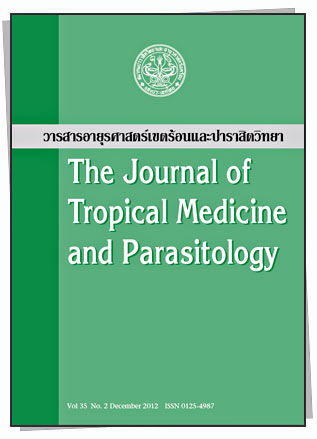Gastrointestinal Helminthic and Protozoal Infections of Goats in Satun, Thailand
Main Article Content
Abstract
Abstrac
Htelminthic infections remain a major constraint to small ruminant production in Thailand,resulting in productivity losses through reduced feed intake and decreased efficiency in feedutilization. The objectives of this study were (i) to assess the prevalence of gastrointestinal (GI)parasitism in meat and dairy goats of Satun Province, Thailand; (ii) to determine the species ofexisting GI parasites; and (iii) to compare the parasite population of goats in different districtsof Satun Province. The study was conducted in seven districts of Satun, in southern Thailand. Atotal of 1,026 fecal samples were collected and subjected to ethyl acetate centrifugation to identifyparasite eggs or cysts. The overall helminthic prevalence among the goats was 76.4%. The resultssuggested that parasite prevalence was higher among meat (94.3%) than dairy (47.7%) goats, andamong goats < 1 year of age (94.9%) than goats 1-2 years or > 2 years of age. La Ngu District had thehighest prevalence (86.4%) of infections among the seven districts of Satun Province. No significantdifference in GI parasite prevalence was associated with host sex. Most goats had multiple infections(79.7%). The high prevalence of parasitism among the goats possibly reflected grazing, and the lackof anthelminthic treatment programs.
Keywords: gastrointestinal helminths and protozoa; meat and dairy goats; Satun Province; Thailand

